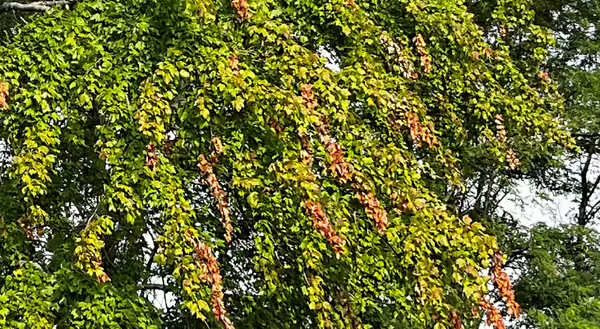
Did periodical cicadas make their presence known around your house?
Are you now seeing the ends of tree branches turning brown and dying? The dead branch tips are the result of our recently deceased cicadas laying their eggs inside these tree branches near their tips. This damages the branch tips causing them to break and turn brown, which gives the outer edge of the tree a brown color.
This breaking of the branch tips is called “flagging”.
For mature trees and shrubs, this flagging, as serious as it looks, is minor to the tree. For young trees and shrubs, if they sustain severe flagging damage, it can result in them being harmed.
Why do some trees show more “flagging” than other trees nearby?
According to tree experts, a vigorously growing branch is usually able to heal the wounds from the cicada egg laying. Also, cicadas prefer to lay their eggs in certain species. Their favorites are oaks (Quercus), maples (Acer), cherry, (Prunus), hawthorn (Crataegus), and redbud (Cercis), but they are known to lay their eggs in over 200 species. From what I am seeing locally, I think our cicadas like the honey locusts as well for their egg laying.
This “flagging” damage may appear to be serious, there really is nothing to worry about. This damage is not serious. A mature, established tree that has “flagging” will easily replace any shoots that have been broken or “pruned” by the cicadas.